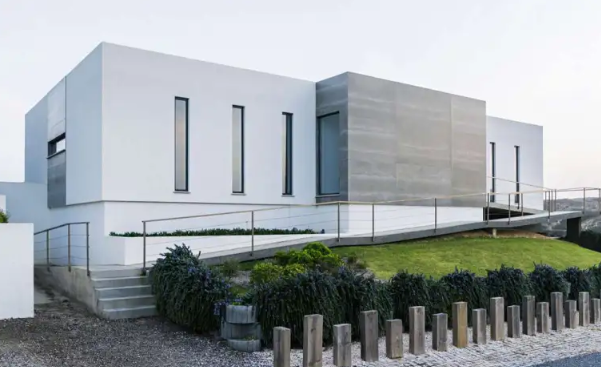Key Takeaways:
- Discover the latest trends revolutionizing urban architecture.
- Understand how sustainability and technology are shaping modern designs.
- Learn how these trends enhance urban living and environmental impact.
- Explore examples and authoritative insights into contemporary architectural practices.
Introduction to Modern Architectural Trends
Modern architecture is transforming due to technological advancements and environmental awareness. Incorporating innovative design techniques, firms like Forum Phi are creating visually striking, ecologically responsible architectures. These trends are crucial as cities expand and densify. Understanding these tendencies might offer insightful information for architects, urban planners, and anybody interested in the future of urban places. From sustainability to smart technologies, these trends provide unique solutions to modern challenges, making life more efficient, comfortable, and environmentally friendly. The significance of these trends extends beyond aesthetic appeal, highlighting the importance of practical and sustainable living solutions.
Sustainable and Green Building Designs
Modern architecture increasingly focuses on sustainability, with green building designs incorporating eco-friendly materials and energy-efficient systems to reduce carbon footprints. Techniques like vertical gardens, rooftop solar panels, and rainwater harvesting systems are becoming more common. Sustainable architecture improves air quality, reduces energy costs, and enhances urban biodiversity. The holistic approach considers a building’s lifecycle, from material sourcing to deconstruction and recycling, resulting in long-term positive environmental impacts.
Smart Technology Integration
The rise of intelligent technology in architecture is revolutionizing how buildings operate and how residents interact with their environments. Buildings have smart sensors and automation systems, offering enhanced convenience and security. Intelligent lighting systems and automated climate control ensure optimal indoor temperatures, while voice-controlled assistants, IoT-enabled appliances, and advanced security systems are becoming standard in modern homes. Smart houses are essential to sustainable urban living since they improve occupants’ quality of life while saving energy and money on operating expenses.
Adaptive Reuse of Buildings
Adaptive reuse is a modern architectural trend that involves repurposing old and unused buildings for new uses. This practice addresses housing shortages, promotes urban density, and preserves historical charm. It often involves complex renovations, balancing the integrity of the existing structure with modern amenities. Successful adaptive reuse projects can enhance community engagement, breathe new life into neglected areas, and contribute to urban planning sustainability by reducing the need for new construction materials and minimizing waste.
Biophilic Design Elements
Biophilic design, a concept that links humans to nature, is gaining popularity in urban architecture. It involves incorporating natural elements like plants, water features, and light into the built environment to promote mental well-being, productivity, and environmental sustainability. Biophilic design has the potential to lower stress, boost happiness, and enhance cognitive performance. Buildings with biophilic design often feature green roofs, living walls, and large windows to maximize natural light and outdoor views. This connection to nature is vital in urban areas with limited green spaces, enhancing residents’ quality of life. Additionally, biophilic designs can save energy by reducing artificial lighting and cooling.
Urban Vertical Expansion
Vertical expansion, incorporating residential and mixed-use developments, is becoming a popular solution for urban growth. These designs aim to maximize space utilization and create self-sustaining vertical communities. They often feature multifunctional spaces, promoting efficient land use, reduced commute times, and community interaction. High-rise buildings usually incorporate sustainable design elements like green roofs, energy-efficient facades, and advanced water management systems. Building upwards allows cities to accommodate growing populations while preserving green spaces and minimizing urban sprawl. This approach promotes sustainable urban development and a more sustainable urban landscape.
Community-Centric Urban Planning
Community-centric designs are becoming increasingly prominent in modern architecture to create environments that promote social engagement and interaction. This approach includes pedestrian-friendly streets, public parks, and communal areas within residential complexes. This design improves the quality of life for urban residents by promoting active living and social cohesion. Features like walkable neighborhoods, accessible public transport, and mixed-use developments create vibrant, inclusive communities. These designs often incorporate public art, cultural centers, and recreational facilities, making urban environments more dynamic and engaging.
The Future of Modern Architecture
Modern architecture is on the brink of significant innovation with the emergence of technologies like 3D printing and modular construction. These advancements will enable faster and more cost-efficient construction processes and greater design flexibility. Sustainability and community-centric planning will continue to shape urban spaces. Architects and planners must stay updated on these trends to create functional, sustainable spaces that enhance urban quality. The future of architecture lies in adapting to changing needs and technologies while maintaining environmental stewardship and social well-being. These trends will shape the cities of tomorrow, making them more livable, sustainable, and interconnected.

